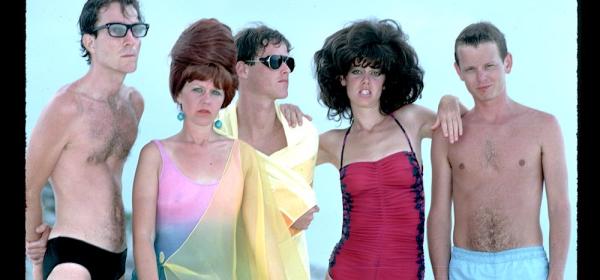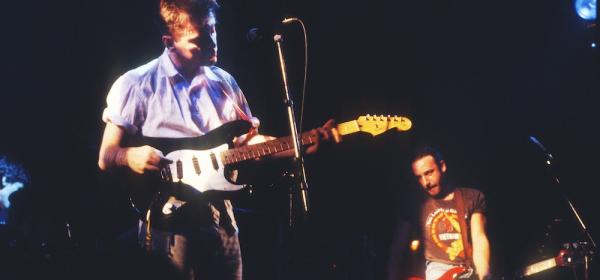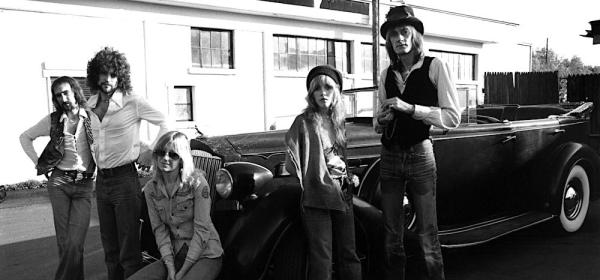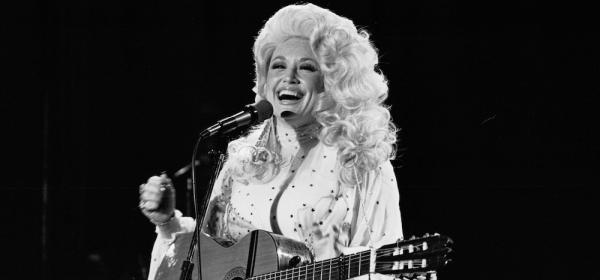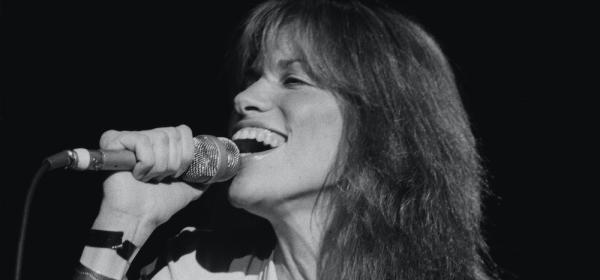
L: Robert Smith of The Cure. Photo by Peter Still/Redferns/Getty Images. R: Chrissie Hynde of Pretenders. Photo by Fin Costello/Redferns/Getty Images.
The mid-to-late 70s Punk movement was all about breaking the mould. Punk and the music that followed in the next few years – New Wave – produced numerous iconoclastic artists. Most of those artists failed to break commercially and indeed many seemed not really to want to, as success in Punk and New Wave was seen as more a matter of credibility than measurable popularity. But some bands achieved popularity beyond their wildest dreams whilst sticking surely to their guns. ILYOS checks out a few who were able to have their cake and eat it too.
Talking Heads
Odd ones out on New York’s CBGB’s scene – they sounded nervous and spare when most around them, and certainly the likes of the Ramones and even Blondie sounded larger than life – the Talking Heads nonetheless attained a level of success fairly early on in the piece, with their debut in 1977. Once they got that level they did what many artists would see as unthinkable – they shifted sideways to include new rhythms and textures. And that worked too, to the level that the band is iconic, off-shoot the Tom Tom Club also found great success, and David Byrne – who is touring Australia in November and whose latest album American Utopia can be heard here – has the freedom to very much do what he wants musically.
Devo
They started out long before punk (one of quite a few so-called ‘post-punk’ bands who were around long before punk – others include Pere Ubu and Cabaret Voltaire) and steadfastly had nothing to do with the music industry. They made crazy, smart and uncommercial music, until one day what they were doing was suddenly what people wanted to hear.
Joy Division/New Order
Joy Division were dark and at time intensely romantic - the posthumous single “Love Will Tear Us Apart” really struck a chord after the suicide of singer/songwriter Ian Curtis. One of a handful of bands inspired directly by the thrill of the Sex Pistols legendary Manchester appearance in 1976, they surely had no inkling that, as New Order, they would have massive hits and inspire subsequent generations of dance and electronic artists.
Public Image Ltd.
By the time it was apparent that the Sex Pistols had indeed pulled off the Great Rock’n’Roll Swindle, singer Johnny Rotton has disassociated himself from the band. As John Lydon he wanted to experiment and move away from traditional rock and pop sounds. Like the Talking Heads, Lydon did this so successfully that he took the public with him. Within 5 years, with the success of the defiantly anti-commercial “This Is Not A Love Song”, PiL were a huge commercial success.
The B52's
Extreme kitsch, minimal tunes played on cheap instruments – The B52's were a garage band in all but name when they started, but the sheer novelty of their look and sound and the force of their personality meant that “Rock Lobster”, originally recorded for a pittance and released by a tiny Atlanta label in 1978, would soon be a worldwide smash.
Models
Moving down under, Melbourne’s Models formed from the remnants of early Melbourne punky popsters the Teenage Radio Stars and synth-punk pioneers Jab, and were soon joined by a member of electronic innovators Whirlywirld. The band’s catchy synth-punk/pop sounds soon found favour around town, but by the time they signed to Mushroom and recorded, they’d ditched most fan favourites in favour of new material that was way outside of anything Australian radio was ready for. But, as was the case with New Order in the UK, the Models were soon able to capitalise on the very changes that they’d helped inspire.
Hunters & Collectors
More so even than the Models, the Hunters began way outside of the commercial realm. Initially inspired by the austere industrial funk sounds recorded in Germany by producer Conny Plank – who the band would enlist to record their second album The Fireman’s Curse – the band ended up in sync with both the burgeoning alternative music and fashion scenes in Melbourne and their rapid popularity growth forced the mainstream to pay attention. Once they got the door open, they never looked back.
The Stranglers
Misanthropic, misogynist, violent, dirty – the Strangers were never a thing of pop dreams, yet without toning anything down they were massive at home and even had an early Australian hit with “Peaches”. When they did decide to turn it down a bit they didn’t go the synth route but bought in a harpsichord wrote a song about heroin – as you do – and had their biggest hit with “Golden Brown”.
Pretenders
Ohio girl Chrissie moved to London to be where the action was in the early ‘70s. She soon found herself writing for the NME and shacked up with Iggy-acolyte and fellow journo Nick Kent. Punk hit and she fell in, and after nearly joining a nascent version of the Sex Pistols she pulled together her own raw rock band the Pretenders. Eschewing synth sounds and other trends, the Pretenders were a very untrendy thing at the end of the ‘70s: a guitar band. The fact that they released a cover of an obscure Kinks tune “Stop Your Sobbing” as their first single suggested an initial lack of confidence, but they had the songs and Chrissie had the voice and the look and once things got moving properly there was no stopping them.
The Cure
Their 1978 debut single “Killing An Arab” was a fairly inauspicious start as far as commercial potential went, and even their second single, the now-classic “Boys Don’t Cry” failed to connect. The Cure were a unique sounding band and soon developed a unique look - one involving eyeliner, black hair dye and hairspray. Before long they were pin-up boys for a new movement called ‘goth’ and their popularity was such that much airplay and video play followed.
For more great bands and songs of this ilk, follow our 'Shake Some Action' playlist on Spotify...



